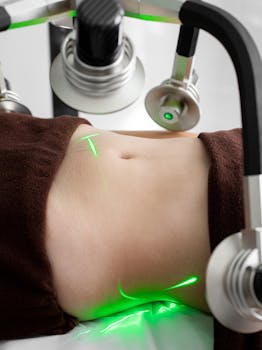how to spot a bbl is a common search for people curious about body contouring trends and safety. A Brazilian Butt Lift (BBL) involves removing fat from one area of the body and injecting it into the buttocks to enhance shape and volume. This guide explains practical, respectful ways to recognize common indicators, why people choose the procedure, and how to address concerns—without encouraging speculation or body-shaming.
Spotting a BBL: Signs and visual clues
There are no foolproof visual tests, and many natural body types can resemble surgical results. Still, some signs of a BBL are commonly reported by clinicians and observers. Look for changes that occur relatively quickly compared with a person’s prior shape, such as a sudden increase in buttock volume paired with slimmer donor areas (hips, abdomen, thighs). Other possible signs of a BBL include visible scars near liposuction sites, temporary bruising or swelling, and changes in how clothing fits across waist and hips.
How to tell a BBL vs. natural variation
Understanding how to tell a bbl apart from natural variation means focusing on context and timing. Natural changes in body composition tend to be gradual, while surgical results are more immediate. If someone has a markedly different silhouette within weeks or months, or if there are multiple localized areas of fat loss (suggesting liposuction), those may be clues. That said, fitness, weight fluctuation, pregnancy, and shapewear can also change appearance—so visual cues alone aren’t conclusive.
Common signs of a BBL explained
- Disproportionate contour: a pronounced, rounded buttock with a narrow waist and thinner flanks compared with earlier photos.
- Skin changes: small scars in typical liposuction entry points around the hips, lower back, or abdomen.
- Surface irregularities: temporary lumps or firmness during healing as transferred fat settles.
- Bruising and swelling: early recovery may include visible bruises where fat was removed and injected.
- Posture or gait differences: during the healing phase, people may sit differently or walk with altered posture to reduce pressure on the treated area.
Medical resources, including procedural summaries and risk profiles, can help explain why these signs occur; a concise overview of the technique and its risks is available from reputable sources like the procedure overview on Wikipedia: Brazilian butt lift (Wikipedia).
How to tell if someone has a BBL responsibly
Curiosity is natural, but it’s important to balance that with respect and privacy. If it’s relevant to someone’s health or a conversation they invite, ask sensitively. Avoid public speculation. If you’re worried about visible signs of complications (severe asymmetry, persistent pain, unusual discharge), encourage that person to seek medical evaluation from a board-certified plastic surgeon or a primary care provider.
Who is a BBL for—and who should avoid it?
People choose a BBL for aesthetic goals—enhanced curves, improved proportions, or to restore volume after weight loss. Ideal candidates generally have enough donor fat and are in good overall health. However, the procedure carries risks: fat embolism is a rare but serious complication, and recovery requires time, limited sitting, and careful follow-up. Surgical alternatives and non-surgical body-shaping options exist; to explore non-invasive approaches and broader beauty innovations, see this article on the latest breakthroughs in skincare technology for complementary treatments and skin health advice: Transform your routine: the latest breakthroughs in skincare technology.
If you’re considering a BBL, consult a board-certified plastic surgeon to discuss realistic outcomes, individualized risks, and post-operative care. Ask about the surgeon’s experience, complication rates, and the facility’s accreditation. Recovery timelines typically include several weeks of swelling and restricted sitting, and results may continue to refine for months as transferred fat stabilizes.
Finally, remember that spotting or discussing signs of cosmetic procedures should be done with compassion. People’s bodies and choices are sensitive topics; prioritize safety and direct medical concerns to qualified professionals.
- Takeaways:
- Signs such as rapid contour changes, donor-area slimming, and short-term bruising can suggest a BBL, but they’re not definitive.
- Respect privacy—avoid guessing or commenting publicly about someone’s body.
- If you suspect complications, recommend professional medical evaluation promptly.
Is a bulging, round butt always the result of a BBL?
No. Genetics, targeted training, fat distribution, and clothing or shapewear can create similar shapes. Visual clues alone don’t confirm a procedure.
What are the health risks associated with a BBL?
Risks include infection, fluid collections, asymmetry, and in rare cases, fat embolism. Discuss all risks with a board-certified plastic surgeon and follow post-op instructions closely.
Can non-surgical methods achieve similar results?
Non-surgical options like muscle-toning exercises, dermal fillers (limited use), and external devices may improve shape but typically offer more subtle changes than a BBL. A surgeon or dermatologist can outline realistic expectations and alternatives.






